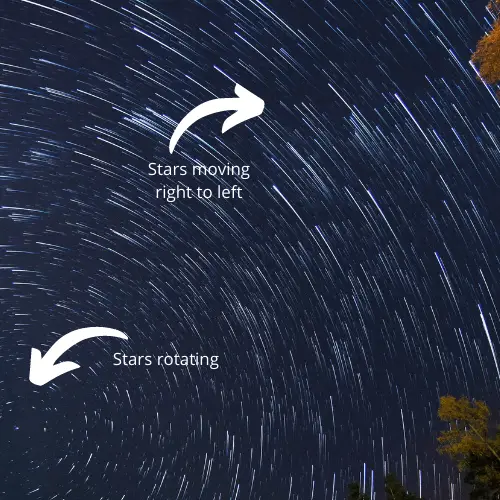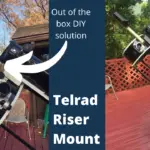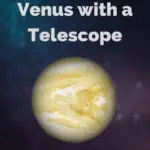There are two types of telescope mounts, with variations within each category. The type of mount you have will determine the type of observing you do. While I did not think about mounts too much with my first scope, now that I am looking into imaging the mount is more important than the telescope.
Choose a telescope mount that can hold the weight of your telescope and all the gear and accessories in your setup, be sure the mount is suited to your type of observing. Astrophotography of deep sky objects requires an Equatorial Mount, and visual observing for beginners is best done with an Alt/Az mount. The specific mount you will need within those categories depends on your goals.
The telescope mount is the piece that connects directly to a telescope and a tripod. Tripods are not mounts. The tripod holds the mount up, but does not determine the movement of the telescope.

The two most popular kinds of telescope mounts are Dobsonian style Alt/Az mounts and German Equatorial mounts. These are the mounts you will hear about most often.
I will discuss the types of mounts I know about, but there are endless variations on these two types of mounts.
Selecting a mount for your telescope will come down to function and budget. If you ever plan to get into astrophotography, and you have the budget, start with an Equatorial mount. While astrophotography is possible with an AltAz mount, an Equatorial Mount will almost always give a better result.
Alt/Az Mounts
Alt/Az mounts are telescope mounts that move right to left and up and down. They are more intuitive for a beginner. They are often balanced with the telescope weight making them easy to adjust.
They usually less expensive than Equatorial Mounts.
Alt/Az mounts come in 3 main styles:
Dobsonian Mount
Dobsonian telescopes, like all Alt/Az mounts, adjust from right to left and up and down. They can give you great views for visual observing, but they cannot move in a smooth arc to track objects for astrophotography.
Dobsonian mounts are often recommended to beginners as they are easy to set up and easy to use. They are also some of the most affordable telescope mounts.
Dobsonian mounts paired with a reflector telescope gives new astronomers the best value for the most aperture, they do not need to be leveled or aligned to be used manually. They are also fairly portable in the 6-10 inch aperture range.
They are available with GoTo electronics that allow for easy location and tracking of objects.
My first telescope was a 10 inch Dobsonian mounted reflector telescope. It was less than a thousand dollars and it was a great introduction to astronomy. The mount was all manual and it allowed me to become familiar with the night sky and it was easy to transport and set up.
I recommend a Dobsonian Mount with a reflector telescope to all beginners, it is the best way to get into the hobby on a smaller budget.
Standard Alt/Az Mount
Standard Alt/Az mounts are similar to the kind that you see on a standard camera tripod. These mounts are adjustable up and down and left to right.
If you have ever used a camera on a tripod like the one below, you can probably use a Standard Alt/Az mount.
There are a lot of variations of this standard mount, just know that they are very simple to use in most cases.
Fork Mount
The fork mount is another variation of Alt/Az mount. The biggest difference is that it attaches to the telescope on both sides of the scope. It creates an axis that moves the scope up and down.
The fork mount refers to the part of the mount that attaches to the telescope. Equatorial and Alt/Az mounts can be fork mounts.
The movement of the scope on a fork mount is determined by what is below the telescope and above the tripod!
What is a Field Derotator?
When using an Alt/Az mount for astrophotography you can use a Field Derotator.
The area in front of your telescope is called the field.
The earth rotates around its axis, this means that when we look at the sky above us, it is rotating. When you photograph the sky without rotating your camera the stars make a circle.
An Alt/Az mount only moves right to left and up and down, a field derotator will allow for a third kind of movement so that you can track stars more precisely.
A field derotator rotates your camera so that your image tracks with the stars movement.
These are computerized accessories that can be installed on many telescopes. There is a lot of complicated math that goes into the software in a field derotator and the price reflects the complexity.
The rotation of the earth is observed at different speeds at different latitudes. If you are observing an object close to the horizon you will not notice much rotation, but if you are observing or capturing images closer to the zenith you will see a lot of rotation.
This image illustrates the movement:

You can see the left to right movement of the stars is observed more dramatically closer to the horizon.
Equatorial Mount (EQ)
Equatorial mounts have more axis of movement than an Alt/Az mount. Once they are polar aligned, they are capable of rotating with all the movements of the earth. This is important when observing objects far from earth, not because they are moving, but because we are.
The rotation of the earth results in an observable arc of stars. EQ mounts are designed to counteract that arc movement.
While Alt/Az mounts have two movements, Azimuth or left to right and Altitude or up and down, EQ mounts have two different movements, Right Ascension and Declination.
These movements, along with polar alignment allow EQ mounts to move your telescope in an exactly opposite way to the rotation of the Earth.
When you are photographing objects in deep space, they are very very dim. To capture them you must take a very long exposure photograph. Since stars move, the telescope must also move in order to capture that long exposure photograph.
Polar Alignment
EQ mounts must be polar aligned. This means that the polar axis will need to be parallel to the rotational axis of the earth.
This allows the telescope to track with the arc of the movement of stars across the sky.
Polar alignment is a skill to learn and once you have become familiar with the process, I am told it is very quick.
I do not have an EQ mount, so check out this video for a bit more information on polar alignment by the amazing Trevor from AstroBackyard.
Counterweights
Equatorial mounts require balancing. This means that you will add weight to the mount so that your telescope moves easily.
An unbalanced telescope will have trouble tracking across the sky. Balance allows the movement of the scope to be smooth and even with little to no resistance.
You only need to balance your telescope once, it does not need to be adjusted unless you make a big change in your setup.
If you are traveling with your telescope, and removing it from your mount, you will want to be sure to balance it when you set up.
When balancing with counterweights take safety precautions. The weights are heavy and they can fall and break toes and teeth. The other danger is that a loose scope can fall to the ground while being balanced.
Be sure to loosen only one component at a time when balancing.
Balancing the telescope on an EQ mount is just like balancing a seesaw. This video explains and illustrates this beautifully and simply.
There are lots of heavy pieces of equipment that may be added to or taken away from a scope over the course of observing, be mindful of the balance. If you switch out eyepieces, filters or coma correctors check the balance as these all add weight.
Types of EQ Mounts
German
German Equatorial mounts, sometimes called GEMs, are the most common type of EQ mount.
These mounts can fit any optical tube assembly, they are often purchased on their own rather than with a telescope. They are often the big upgrade that astronomers make when they decide to start imaging.
Be sure to check that your GEM is rated to hold more than the weight of your gear. Buy the one with the highest weight rating that you can afford. When you approach the weight limit on an EQ mount the tracking quality degrades.
Your GEM can hold a variety of telescopes so as your gear evolves a good German EQ can support changing gear as long as you are within weight recommendations.
German EQ mounts are the preferred mount for astrophotography. While other mounts are capable of capturing longer exposure photography none do it as well or as easily as the GEM.
These have a reputation for being the easiest to polar align as well.
Open Fork
Open fork mount describes the way the mount attaches to the telescope. This type of mount is attached to the telescope at two points allowing the scope to slew horizontally.
Fork mounts are more compact than German EQ mounts. They may be better suited for travel. Fork is also great for visual observing.
There are drawbacks with this mount, the spacing of the fork may make it more difficult to attach a camera to the telescope.
Fork mounts are often used with a wedge, the wedge allows for polar alignment.This can be challenging if you have a very heavy setup because the scope will need to be lifted onto the wedge. The wedge is often on top of the tripod and then the mount is installed on top.
The need for a wedge is one reason astrophotographers choose German Equatorial mounts.
Weight of Your Gear
When considering a mount for your telescope be sure that the weight capacity of the mount should be capable of handling at least double the weight of your gear. I have heard that you should not exceed 40% of the total weight capacity of the mount.
As you approach the upper limit of the weight capacity of a scope slewing will become more difficult.
If you notice that you are getting resistance or bounceback when you are trying to move your scope, check the weight capacity. This is likely the problem.
You can reduce the weight of your gear or you can size up your mount.
Tripods
Now this post has been primarily about mounts, the thing that sits on top of the tripod and controls the movement of the scope.
Most mounts will come on a tripod, with the exception of Dobsonian mounts which do not use a tripod to support the scope.
The size of Dobsonian mounted telescopes usually make observing comfortable from their position on the ground.





